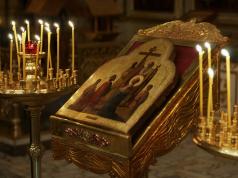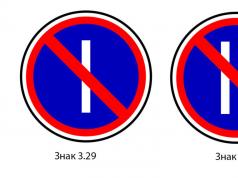In ancient times, the main religion was paganism, or, in a different way, polytheism. Moreover, each of the gods was responsible for a certain area of activity, and his power spread only within this area. In particular, it was believed that merchants and merchants were taken under their reliable patronage by the gods of trade. These were the object of beliefs of various peoples, and each of the communities called its intercessor in its own way. The gods of trade found their place and recognition both in the widely known Roman and ancient Greek mythology, and in our native, Slavic, pantheon. Let us recall the features of each of the deities of various peoples of the world.
Hermes
The Greek god of trade, Hermes, according to ancient legend, is the son of the mountain nymph Maya. His father - neither more nor less than the sky - Zeus himself. Born from forbidden love, a demigod from early childhood began to show unprecedented resourcefulness, cunning, as well as dexterity and intelligence. In addition, in ancient Greek sources, such qualities as speed and quickness are attributed to Hermes, which makes him the patron of messengers, the herald of peace and war. Like all gods of trade, Hermes helps merchants by providing them with the information they need. The Greeks changed the purpose of this demigod over time. Gradually, he was credited with the role of the protector of thieves, because his grip helps scammers to see where and what is bad, as well as to cover the stolen. Later, Hermes began to perform the function of a conductor of the souls of the dead to the kingdom of Hades. It was believed that this demigod patronizes shepherds and flocks and can inspire dreams. Stone pillars at the gates and doors were dedicated to him, which made him the protector of travelers.

The analogue of Hermes in Roman mythology is Mercury. Just as in Greece, he was considered the son of the sky god, but the Romans called him the Whole. Initially, Mercury was credited with patronage of the grain business, but gradually he became a full-fledged defender of trade, all shopkeepers and peddlers. Merchants made various sacrifices to the god to propitiate him and avoid being deceived by their competitors. Interesting is the fact that the fastest of the planets solar system got its name in honor of this fleet-footed protector of the "traders".
Veles

The god of trade among the Slavs is famous under the name Veles. Unlike his southern counterparts, he does not have such qualities as deceit, cunning, roguery. On the contrary, Veles is also proclaimed the patron of wisdom, songs and poetry. Like other gods of trade, he is in parallel the deity of agriculture, namely, animal husbandry. With the name of Veles, the Slavs associated one of the most beautiful star clusters - the Pleiades. Often in ancient sources this god was opposed to Perun. This is the main difference between the "black" patron of pastoralists from Mercury and Hermes, because Veles is one of the main deities, while other gods of trade were recognized, as a rule, only as assistants to more important representatives of the mythological pantheon.
The period of polytheism in antiquity existed among all peoples. To each natural phenomenon and the field of activity, people found their patrons and defenders. The gods of trade, for example, different peoples had similar duties, and sometimes were even similar in appearance.
Roman god of trade
The god of trade and profit among the Romans was Mercury - the son of the heavenly deity Jupiter and the goddess of spring Maya. In the pantheon of the Roman gods, Mercury appeared after the development of trade relations between Ancient Rome and other countries, but he was initially responsible only for the trade in bread.
Outwardly, the god of trade among the Romans looked like a young attractive man with good manners and a tight wallet. Mercury can be distinguished from other gods by the caduceus wand, winged sandals and cap.
There is a legend about the appearance of a caduceus at Mercury. Even in infancy, Mercury decided to steal the sacred cows from Apollo, and when the owner of the herd exposed the cunning, he gave him a lyre made with his own hand from a tortoise shell. Apollo, in turn, gave Mercury a cane. The baby threw a cane into a ball of snakes, the reptiles wrapped around a stick and a caduceus appeared - a symbol of peace.
Ordinary Romans loved Mercury for diligence and patronage, forgiving him a tendency to deceit and resourcefulness. Statues of Mercury were installed not only in temples, but also on sports facilities, where athletes asked the fast god to grant them speed, strength and endurance. And over time, the fastest planet in the solar system was named after Mercury.
Since Mercury was cunning from childhood, he was also called the patron of thieves and swindlers. Merchants, coming to the temple of Mercury, poured themselves with holy water and thereby washed away the guilt for deceit. Over time, Mercury was appointed messenger, the guide of the souls of the dead to the underworld, as well as the patron saint of travelers and sailors. These duties were attributed to Mercury after his identification with Hermes.
Greek god of trade
The god Hermes was considered the patron of trade by the ancient Greeks. Hermes has a lot in common with Mercury: he was also the son of the dominant god (Zeus), from childhood he was distinguished by cunning and dexterity, he patronized not only merchants, but also swindlers. However, there were some differences: Hermes was also the god of astrology, magic and various sciences. As a sign of veneration of Hermes, the Greeks installed herms at the crossroads - phallic-shaped columns (Hermes was known for his love of love) with the image of God. Later, herms lost their original meaning and became mere pointers.
The Slavic god of trade and profit, Veles, was strikingly different from the dapper, cunning and theft-prone Mercury and Hermes. Veles was considered the second greatest after the main god - Perun. Outwardly, Veles was represented as a hairy, shaggy, large man who from time to time took the form of a bear.
Initially, Veles was the patron saint of hunters, shepherds and tillers, who, as a sign of respect, always left offerings to the god - the skin of a killed animal, uncompressed ears of bread. Assistants of Veles  there were goblin, brownies, banniks, barns and other creatures.
there were goblin, brownies, banniks, barns and other creatures.
Since Veles patronized any daily affairs of a person, he was also responsible for trade. Although it is more correct to call Veles the god of wealth earned by honest labor. Carefully followed slavic god trade for the observance of treaties and laws, patronizing honest merchants and punishing swindlers.
After the baptism of Rus', the priests faced the task of trying on ordinary people with official religion. Therefore, many saints suddenly acquired the features of pagan gods. The "duties" of Veles were taken over by Saint Blaise, the protector of livestock, and Nicholas the Wonderworker, the patron saint of merchants and travelers. One of the masks of Veles is considered and.
The names of most of the gods are arranged as hyperlinks, where you can go to a detailed article about each of them.
The main deities of Ancient Greece: 12 Olympic gods, their helpers and companions
The main gods in Ancient Hellas were those that belonged to the younger generation of celestials. Once it took power over the world from the older generation, personifying the main universal forces and elements (see about this in the article The Origin of the Gods of Ancient Greece). The gods of the older generation are usually called titans. Having defeated the titans, the younger gods, led by Zeus, settled on Mount Olympus. The ancient Greeks honored 12 Olympian gods. Their list usually included Zeus, Hera, Athena, Hephaestus, Apollo, Artemis, Poseidon, Ares, Aphrodite, Demeter, Hermes, Hestia. Hades is also close to the Olympian gods, but he does not live on Olympus, but in his underworld.
Legends and myths Ancient Greece. Cartoon


Goddess Artemis. Statue in the Louvre

Statue of Athena the Virgin in the Parthenon. Ancient Greek sculptor Phidias

Hermes with caduceus. Statue from the Vatican Museum

Venus (Aphrodite) de Milo. Statue ca. 130-100 BC

God Eros. Red-figure dish, ca. 340-320 BC e.
Hymen Companion of Aphrodite, god of marriage. According to his name, wedding hymns were also called hymens in ancient Greece.
Daughter of Demeter, kidnapped by the god Hades. The inconsolable mother, after a long search, found Persephone in the underworld. Hades, who made her his wife, agreed that she would spend part of the year on earth with her mother, and the other with him in the bowels of the earth. Persephone was the personification of the grain, which, being "dead" sown in the ground, then "comes to life" and comes out of it into the light.

The Abduction of Persephone. Antique jug, ca. 330-320 BC
Amphitrite Poseidon's wife, one of the Nereids
Proteus One of the Greek sea deities. The son of Poseidon, who had the gift to predict the future and change his appearance
Triton- the son of Poseidon and Amphitrite, the messenger of the deep sea, trumpeting the shell. By appearance- a mixture of man, horse and fish. Close to the eastern god Dagon.
Eirene- the goddess of the world, standing at the throne of Zeus on Olympus. In ancient Rome, the goddess Pax.
Nika- goddess of victory. Constant companion of Zeus. In Roman mythology - Victoria
Dike- in ancient Greece - the personification of divine truth, a goddess hostile to deceit
Tyukhe- Goddess of good luck and luck. The Romans - Fortune
Morpheus- the ancient Greek god of dreams, the son of the god of sleep Hypnos
Plutus- god of wealth
Phobos("Fear") - the son and companion of Ares
Deimos("Horror") - the son and companion of Ares
Enyo- among the ancient Greeks - the goddess of violent war, which causes rage in the fighters and brings confusion to the battle. In Ancient Rome - Bellona
Titans
The Titans are the second generation of the gods of Ancient Greece, born of the elements of nature. The first titans were six sons and six daughters, descended from the connection of Gaia-Earth with Uranus-Sky. Six sons: Kron (Time. for the Romans - Saturn), Ocean (father of all rivers), Hyperion, Kay, Crius, Iapetus. Six daughters: Tethys(Water), Theia(Shine), Rhea(Mother Mountain?), Themis (Justice), Mnemosyne(Memory), Phoebe.

Uranus and Gaia. Ancient Roman mosaic 200-250 A.D.
In addition to the titans, Gaia gave birth to Cyclopes and Hecatoncheirs from marriage with Uranus.
cyclops- three giants with a large, round, fiery eye in the middle of the forehead. IN ancient times- personifications of clouds from which lightning flashes
Hecatoncheires- "hundred-armed" giants, against whose terrible power nothing can resist. Embodiments of terrible earthquakes and floods.
The Cyclopes and Hecatoncheires were so strong that Uranus himself was horrified by their power. He tied them up and threw them into the depths of the earth, where they still rage, causing volcanic eruptions and earthquakes. The stay of these giants in the womb of the earth began to cause her terrible suffering. Gaia persuaded her youngest son, Kronos, to take revenge on his father, Ouranos.








